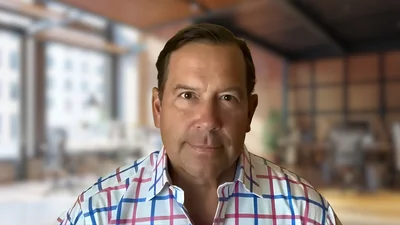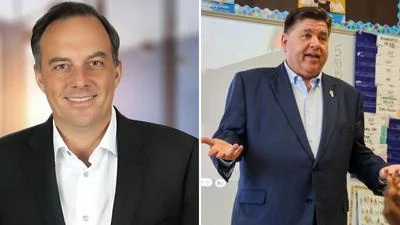Dulce Quintero - IDHS Secretary | LinkedIn
Dulce Quintero - IDHS Secretary | LinkedIn
Illinois Department of Human Services Firearm Violence Research Group met Feb. 20.
Here are the minutes provided by the group:
Welcome/Roll Call/Approval of Minutes
Meeting Called to order @ 9:32am
Facilitator Joe Hoereth welcomed FVRG members to the meeting
FVRG Members Present: Joe Hoereth, Tim Lavery, Dave Olson, Soledad McGrath, Kim Smith (Timantha Goff joined the meeting on behalf of Kim Smith)
FVRG Members Absent: Andrew Papachristos, Lance Williams, Eric Reinhart
Other Attendees: Ana Genkova, Jacqueline Carrillo, Roy Rothschild, Karl Groschow, Assistant Secretary Bell, Melissa Pfeiffer, Clare Fisher, James Pagano, Kari Branham, Kathryn Strimbu, Kayla Butler, Sarah Pointer, Orlando Mayorga
Notetaker: Jessica Cortez
Meeting Minutes for September 19, 2023, and November 21, 2023 have been approved
Public Comment - No public comments received
Discussion and Work Items
Office of Firearm Violence Prevention Update - Assistant Secretary Bell provided an update on OFVP
OFVP is inundated with budget talks and thinking about how OFVP moves forward. Looking at the past two and half years on what impact has OFVP made in investments an are moving forward from the point of just measuring performance of the grantees to looking in determining the efficiency of the programs and of our strategies. How do we sustain the most impactful strategies going forward?
OFVP is also looking at how we look at our reports that are getting from our grantees and is the information that we received the OFVP is also looking at how we look at our reports that are getting from our grantees and is the information that we received the
Discussion of CVI Performance Metrics/Discussion of Performance Measures
James Pagano, Senior Policy Advisor, IDHS shared the following files with FVRG Group
Updated PPR VPS YD Data Fields Summary 2.14.2024
RPSA Dashboard PowerPoint
Facilitator Hoereth: What kind of data information do the grantees track?
James Pagano: After this meeting we will think of a way to get a little more input from our grantees about what data they are collecting whether they collect that at the individual level. We would like to have more real-time information.
Facilitator Hoereth: Just to clarify, I wasn't going to the path of OFVP setting up a system for tracking individual participants via ID or SSN, more of the ability for them to do counts about outcomes per individual. Right now, the PPR gives us counts based on the number of services provided.
FVRG Member Lavery: Did they intentionally distinguish between process and outcome? In terms of a causality question when you create a logic model you start out with , for example what are the activities? Are they doing the activities and they doing those in an effective way? Then you get tot eh client level outcomes. What do you expect from the actual people who are experiencing it? What should happen given those activities and that's a step removed from the slide deck, which is the next step, the communities are going to change. If you can be very intentional about what are your outcome measures, and a causality comes from a scientific mode in tow ways: changes over time and changes relative to a comparison or a control group. Your best bet is working with the sites to say, what can we measure at one point in time? To facilitator Hoereth' s point it becomes a resource issue of who can collate that information and turn it into aggregates that you would need across the entire agency and that becomes where some of these agencies who are resource constraint or which ones require assistance that's where this group can come in and help. The broad lesson is being intentional about your outcome measures.
James Pagano: There are members in this group who are also involved in other similar efforts at the city or county level. I would be curious as a point in comparison whether you feel the city and county are doing things differently or better. In some instances, it's easier for us to learn from other Governmental agencies in terms of borrowing systems and metrics and if FBRG members had insight from these groups.
FVRG Member Lavery: ICJIA is looking at monies right now, so they are making a big effort to look at who is getting that across the 3 levels for their CVI programs. The activity measure tool that they are using, Reshma Desai from IDHS was integral in its developments in the early stages. They have a tool that they have tried to integrate across the three levels that is the same of very similar to the spreadsheet (Updated PPR VPS YD Data Fields Summary 2.14.2024) you shared with FVRG. If you wanted to have a side conversation with one of my center managers Amanda Vasquez, she developed a plan for how we are going to assess our own internal portfolio of ARPA programs.
FVRG Member McGrath: Happy to have a side conversation about some of the work but also, we were the research partner to the city in their investment violence prevention strategies and learned a lot through the work as well as the individual programmatic evaluation that we are conducting. We can chat about what we have encountered over the past 5 years in trying to collect some of the data and thinking about outcomes and measures.
James Pagano: The City laid out another vision for community safety; it can be in tables and panels to plan that. I don't know if there's work that you think should inform. FVRG member Lavery and Facilitator Hoereth made a point earlier there's probably some that measures outside of maybe we'll be focused on whether that be employment , or some type of community help measures.
Facilitator Hoereth: Are there members of FVRG that know any resource where effective measures around community violence interventions have been compiled and discussed definitive stats. What's out there is that it is good starting point for someone looking into best measure outcomes in community violence.
FVRG Member McGrath: Are you asking about specific evaluations at a programmatic level?
Facilitator Hoereth: Yes, or if that's another way to address the same thing, but if someone already compiled literature review or meta paper in the academic sense where it's research on the research and are identifying programs that try to address violence through a community model. These are the outcomes and measures they tend to look at. In some fields that work has been done, the models have been around long enough for someone to have done that we may not be there with the research.
FVRG Member Lavery: Karl Gruschow is preparing a piece specifically on the optimal way to measure community violence using NIBRS data.
Karl Gruschow: What I did would not relate to exactly what Facilitator Hoereth was discussing. It was more focused on just operationally what's the definition of community violence. My review is measurement definition oriented about the act whereas Facilitator Hoereth was speaking more to outcomes.
FVRG Member McGrath: There are some basic metrics, but we've done our own literature reviews. The field is still evolving in terms of research. WE are seeing convergence in Chicago in a lot of work. There is a report that lists all the things that don't exist but there are landscape and literature reviews. Among FVRG members on the call there are enough that have done this work to be able to pull the list together informally.
Facilitator Hoereth gave a summary of what Assistant Secretary Bell shared as well as the spreadsheet James Pagano presented to the FVRG members that joined the call late. Facilitator Hoereth: You don't want to burden the grantees with a ton of questions, but it feels there's a lot more we could be asking to help fill the gaps.
Karl Gruschow: This might be what FVRG Member Lavery was expecting me to say earlier when he invoked some of the community violence work. I haven't been as systematic about the literature view aspect, but pragmatic in terms of community level outcomes. I have been looking at tools like the Illinois youth survey because at the community level risk taking behavior is basically used by the community if there is a lot of violence. Disbelief in the social structure, lack of hope leads to higher risk-taking behaviors, drug use, mental health issues.
Facilitator Hoereth: For OFVP it might be helpful for the Greater Illinois folks as they establish those councils to make sure they include schools to and encourage those schools to participate in the Illinois Youth Survey. At least in those areas, since we already know OFVP is funding there, if those schools participate then you would have that data set from that locality.
Facilitator Hoereth offered to pull together a subgroup of FVRG members to scratch the surface more on the topic and maybe figure out how they can support OFVP with some collective effort around those measures. FVRG members expect some kin of outreach from Facilitator Hoereth, maybe a call in between now and the next FVRG meeting Tuesday, March 20th.
Open Discussion:
Eligibility requirements to ensure those at highest risk of shooting or being shot are being reached with program services.
Facilitator Hoereth opened the discussion about the recent initiative spearheaded by Chicago CRED Violence Prevention Program to vastly upscale Community Violence intervention programming in Chicago. It was recently announced through an event with the Governor and a wide range of community violence intervention groups at the South Shore Cultural Center. Announcing this new initiative to vastly scale up community violence intervention in Chicago over the next 10 years with 5 year and 10-year goals. Facilitator Hoereth shared a PDF press release associated with the event and with the plan Scaling Community Violence Intervention for a Safer Chicago, or "SC2". This is an initiative that brings together a wide range of stakeholders and community-based organizations to better coordinate the delivery of their services.
Facilitator Hoereth shared PowerPoint Slide of SC2-Scaling Community Violence Intervention for a Safer Chicago
Four questions for Discussion:
General thought on scaling up CVI?
How can OFVP know that its programs are reaching the highest risk population? What data/information is key?
How can its grantees for better/more to increase capacity to increase scale in reaching those at highest risk?
Show we re-evaluate our geographic strategy?
FVRG Member Olson: The benefit the City of Chicago has is their ability to have data that's available at a very small geographic area for the early planning with the DHS program.
Assistant Sec. Bell: The SC2 strategy looks at sustaining the public investment for fiscal year 24 in plus scaling so the public investment for fiscal year 24 for CBI in Chicago was around 110 million. Out of the 110 million DHS between our direct investment with JAC accounted for almost 60 million.
FVRG Member McGrath: We are the research partner for the North Lawndale Collaborative and a lot of the work is informing the SC2 initiative but were early in the work of the collaborative. There has been a tremendous amount of coordination and infrastructure that's being built to facilitate the coordination by organizations like MPI.
Assistant Sec. Bell: Do we need more time to allow the CBI Investment to take root or would this be a good period to re-determine what those communities could look like?
Facilitator Hoereth: This is a good question to raise now. The geographies that were selected and the investments that have been made and thought about this is the best use.
Links Shared: No link shared
Proposed Next Meeting Date/Time: Tuesday, March 19, 2024 @ 9:30am
Meeting Adjourned @ 11:02am
https://www.dhs.state.il.us/page.aspx?item=162031





 Alerts Sign-up
Alerts Sign-up